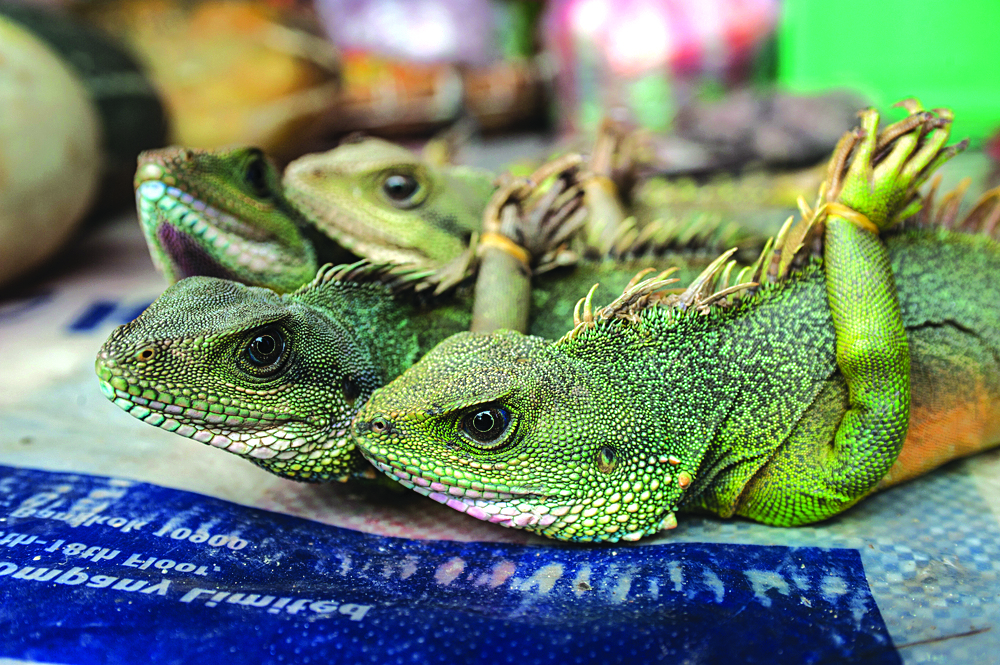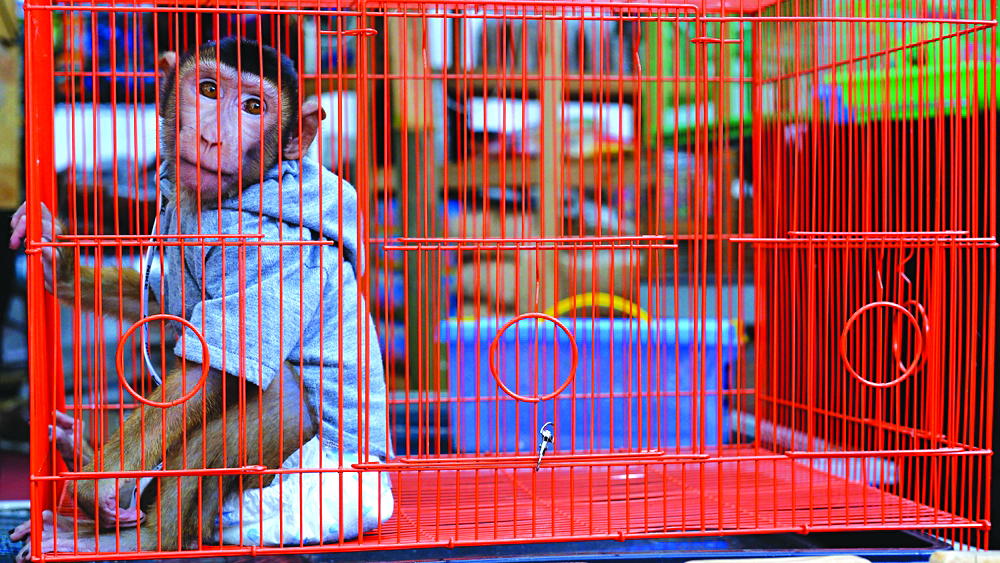Small, colorful Birds crammed into cages stacked one on top of the other are displayed on the sidewalk. Beside them, a man calls out their prices to passers-by. A large Monitor Lizard, clawed legs bound behind his back, is held up for inspection to passing cars by a street vendor who tells everyone that the Reptile tastes very good cooked as adobo. A terrified baby Monkey is cradled by an Aeta who implores tourists at a gas station to buy the animal so that he can send his child to school.
These are all-too-common sights in many places in the Philippines. In a country where it is so difficult to find gainful employment, the capture and selling of wild animals has become one of the ways people can survive.
It’s quite understandable that many would feel sympathy for both the vendor and the “goods” being sold. Quite a few “animal lovers” have taken it upon themselves to purchase the beleaguered creatures with the intention of setting them free. After a little haggling, they settle on a price, take possession of the animal being sold with intentions of perhaps taking them to a wildlife shelter.
While such actions may appear to spell a happy ending for the particular captive creature, they unfortunately exacerbate the situation for many other wild animals.

LAWS GOVERNING WILD ANIMAL TRADE
There are Philippine laws in place to protect wildlife and ensure proper and safe transport, as well as to protect the nation’s ecosystem.
Republic Act No. 9147, the Wildlife Resources Conservation and Protection Act of 2001, prohibits the trading and transport of wildlife in the Philippines. Anyone who wishes to engage in the sale of wild animals has to apply for the necessary permits.
There is also Republic Act 2590, which specifically focuses on protected species and makes it “unlawful for any person in the Philippine Islands to hunt, wound, take, or kill,
or have in his or her possession, living or dead, or to purchase, offer, or expose for sale, transport, ship, or export, alive or dead, any protected bird, fish, shellfish, or mammal, or to sell or have in possession for sale any part of either.”
The Philippines is also part of the Convention on International Trade in Endangered Species of Wild Fauna and Flora (CITES), the international agreement among countries to ensure that international trade in specimens of wild animals and plants does not threaten their survival.

In spite of these laws, however, most of those who engage in the trade of illegal wildlife in the country are seldom caught and even more rarely prosecuted. Also, the low penalties prescribed in the current wildlife law do not deter people from illegally poaching and selling wildlife in the country.
Adding to the complications is the penchant of some people to take pity on vendors selling wild animals. Rather than report the activity to the authorities, they believe that the best course of action in this situation is to purchase the hapless creatures being sold.
Here’s the rub: Even if one does it with the best of intentions, not only is it often illegal, but it also does not solve the problem and actually makes it worse in the long run.

CLIPPED WINGS
Birds are probably the most frequently sold wild animals in the Philippines. It’s easy to see why. The feathered creatures come in all shapes and colors and are fascinating to behold.
Wild members of the Parrot family are especially favored by vendors, including the Blue-Naped Parrot, the Palawan Racket-Tail, and the Philippine Hanging-Parrot or Colasisi. But even more common species like Chestnut Munias, Eurasian Sparrows, Black-Naped Orioles, and Glossy Starlings are often trapped and sold.
Common or rare, it is against the law to trap and sell wild Birds. . . as well as to buy them.

And yet for many, the combination of a caged Bird and an indigent seller is irresistible. And so, well-meaning individuals buy the Bird, release them back into the wild, and pat themselves on the back for seemingly having accomplished a good deed.
Scenarios such as this have triggered spirited discussions among groups of animal enthusiasts. In the Facebook group Philippine Birdwatch Community which is made up of birders and birdwatchers, a photo of wild Birds in a cage being sold by an elderly lady in front of a local church launched a long exchange after one commenter opined that had he been there, he would have bought all the Birds and then liberated them. In doing so, he would have restored the Birds’ freedom and helped provide for the poor vendor’s needs in the process.
Other commenters maintained that both the act of selling and buying the Birds were illegal, and the proper thing to do would have been to report it to the authorities.
This was countered by some who insisted that in situations such as this, one should take the humane route rather than the legal one and look out for the welfare of both Birds, who would likely die in captivity, and that of the seller, who probably knew of no other way to earn a living.
But certain members of the group pointed out that buying the Birds would perpetuate a cycle of animal poaching, as this would send the signal that it was a viable business.
THE BIG PICTURE
When faced with the above scenario, it is quite understandable how one might yearn to rescue both captive and captor: one from a literal prison, the other from the prison of poverty.
Some sellers of wild animals can be viewed as victims of a system that has failed to provide them with a viable means of livelihood. Their participation in an illicit activity is an act of desperation.
But by purchasing their “goods,” the buyer not only breaks the law as well, but contributes to a worsening of an already dire situation.
No long-term good can come out of buying illegally-acquired wild animals. Doing so fuels a demand for such, which could lead to increased poaching and more frequent selling activities.
In the long run, both animals and sellers are put in jeopardy. Both are placed in a position where they could be deprived of their liberty.







